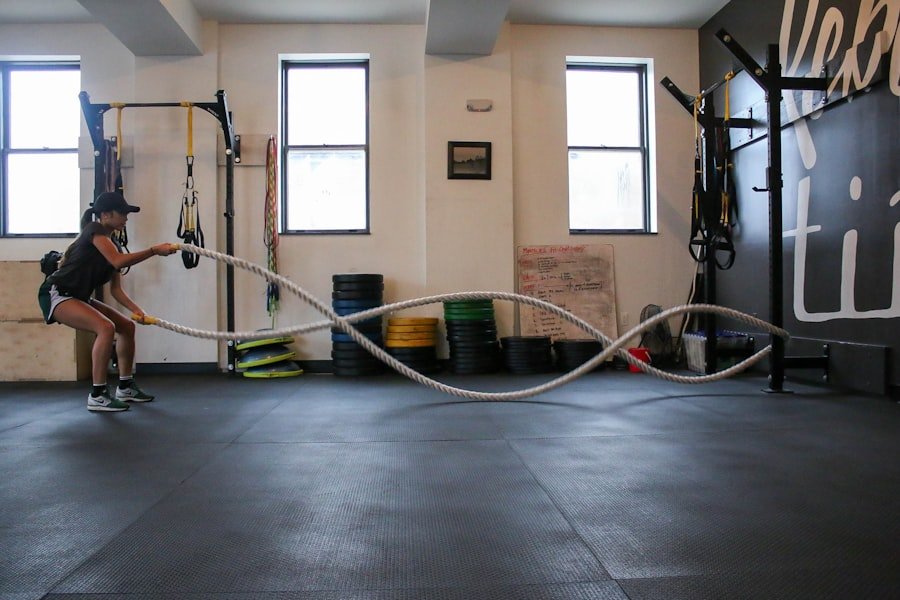FUPA, an acronym for “Fat Upper Pubic Area,” refers to the excess fat that can accumulate in the area above the pubic bone and below the abdomen. This term has gained traction in recent years, particularly in discussions surrounding body image and self-acceptance. While it may seem like a lighthearted term, it represents a real concern for many individuals who struggle with body confidence and self-esteem.
Understanding FUPA is essential for those who wish to address it, whether through lifestyle changes or medical interventions. As we delve deeper into the concept of FUPA, we recognize that it is not merely a cosmetic issue but can also be a source of emotional distress for many. The societal pressures to conform to certain body standards can exacerbate feelings of inadequacy, leading to a cycle of negative self-image.
By acknowledging what FUPA is and the implications it carries, we can begin to foster a more compassionate dialogue around body diversity and acceptance.
Key Takeaways
- FUPA stands for “fat upper pubic area” and refers to the excess fat that accumulates in the upper pubic region.
- Excess weight gain and lack of physical activity can contribute to the development of FUPA.
- Genetic predisposition can play a role in the development of FUPA, making some individuals more prone to accumulating fat in this area.
- FUPA can pose health risks such as increased risk of heart disease, diabetes, and other obesity-related conditions.
- Embracing body positivity and accepting your body can help in addressing FUPA-related mental health issues.
The Anatomy of FUPA: What Causes It and Where It’s Located
FUPA is primarily located in the lower abdominal region, just above the pubic area. This accumulation of fat can be influenced by various factors, including hormonal changes, lifestyle choices, and genetics. The anatomy of this area is complex, as it involves not only fat deposits but also skin elasticity and muscle tone.
As we age, our bodies undergo numerous changes that can contribute to the development of FUPA, making it a common concern for both men and women. Several factors can lead to the formation of FUPHormonal fluctuations, particularly during pregnancy or menopause, can cause fat to be stored in this area. Additionally, weight gain from poor dietary habits or a sedentary lifestyle can exacerbate the issue.
Understanding these causes allows us to approach FUPA with a more informed perspective, recognizing that it is not simply a matter of willpower or personal failure but rather a complex interplay of biological and environmental factors.
FUPA and Weight Gain: How Excess Fat Contributes to Its Development

Weight gain plays a significant role in the development of FUPWhen we consume more calories than our bodies expend, the excess energy is stored as fat. This process can lead to an increase in fat deposits in various areas of the body, including the upper pubic region. As we gain weight, our bodies may prioritize fat storage in certain areas due to genetic predispositions or hormonal influences, making FUPA a common outcome for many individuals.
Moreover, the relationship between weight gain and FUPA is often compounded by lifestyle choices. Sedentary habits, such as prolonged sitting or lack of physical activity, can contribute to overall weight gain and exacerbate fat accumulation in the lower abdominal area. By understanding this connection, we can take proactive steps to manage our weight through healthier eating habits and increased physical activity, ultimately reducing the likelihood of developing FUPA.
FUPA and Genetics: The Role of Genetic Predisposition in FUPA
Genetics play a crucial role in determining where our bodies store fat, including the development of FUPSome individuals may be genetically predisposed to accumulate fat in the lower abdominal region due to inherited traits from their parents. This genetic influence can make it more challenging for some people to achieve their desired body shape, regardless of their efforts in diet and exercise. While we cannot change our genetic makeup, understanding its impact on our bodies can help us develop realistic expectations and strategies for managing FUPBy recognizing that genetics may play a role in our body composition, we can focus on what we can control—our lifestyle choices—rather than becoming discouraged by factors beyond our influence.
Embracing our unique genetic backgrounds allows us to appreciate our bodies for what they are while still striving for health and well-being.
Health Risks Associated with FUPA: The Impact on Overall Well-being
FUPA is not just a cosmetic concern; it can also pose health risks that impact overall well-being. Excess fat in the abdominal area has been linked to various health issues, including cardiovascular disease, diabetes, and metabolic syndrome. The accumulation of visceral fat—fat stored around internal organs—can lead to inflammation and other complications that affect our health.
As we consider the health implications of FUPA, it becomes clear that addressing this issue is not solely about aesthetics but also about promoting long-term health. By taking steps to reduce excess fat through diet and exercise, we can mitigate these risks and improve our overall quality of life. Understanding the connection between FUPA and health empowers us to make informed decisions about our bodies and encourages us to prioritize our well-being.
FUPA and Body Positivity: Embracing and Accepting Your Body

Embracing Self-Acceptance
By fostering a culture of acceptance, we can help individuals feel more comfortable in their skin, regardless of whether they have FUPA. Embracing body positivity means recognizing that our worth is not defined by our appearance. It encourages us to celebrate our bodies for what they can do rather than how they look.
Cultivating a Healthier Relationship
By shifting our focus from societal standards to self-acceptance, we can cultivate a healthier relationship with our bodies and reduce the stigma surrounding conditions like FUPA. This journey toward acceptance is not always easy, but it is essential for fostering a more inclusive society where everyone feels valued.
Toward a More Inclusive Society
By promoting body positivity, we can create a society where everyone feels valued and respected, regardless of their physical appearance. This movement is crucial for breaking down barriers and promoting a more inclusive environment for all.
FUPA and Exercise: How Physical Activity Can Help Reduce FUPA
Physical activity plays a vital role in managing FUPA and overall body composition. Engaging in regular exercise helps us burn calories, build muscle, and improve metabolism—all of which contribute to reducing excess fat in the abdominal area. Cardiovascular exercises such as running, swimming, or cycling are particularly effective at promoting fat loss while also enhancing cardiovascular health.
In addition to cardiovascular workouts, incorporating strength training into our fitness routines can help tone the muscles in the abdominal region. Building muscle not only improves our overall physique but also increases our resting metabolic rate, allowing us to burn more calories even at rest. By committing to a balanced exercise regimen that includes both cardio and strength training, we can take significant steps toward reducing FUPA while improving our overall fitness levels.
Diet and FUPA: The Role of Nutrition in Managing FUPA
Nutrition plays an equally important role in managing FUPA as exercise does. Our dietary choices directly impact our body composition and overall health. Consuming a balanced diet rich in whole foods—such as fruits, vegetables, lean proteins, and whole grains—can help us maintain a healthy weight and reduce excess fat accumulation.
Moreover, being mindful of portion sizes and caloric intake is crucial for weight management. We should aim to create a caloric deficit by consuming fewer calories than we burn through daily activities and exercise. Additionally, staying hydrated and limiting processed foods high in sugar and unhealthy fats can further support our efforts to manage FUPA effectively.
By prioritizing nutrition alongside physical activity, we can create a holistic approach to reducing excess fat in the upper pubic area.
Surgical Options for FUPA Reduction: Exploring Liposuction and Tummy Tucks
For those seeking more immediate results in reducing FUPA, surgical options such as liposuction or tummy tucks may be considered. Liposuction involves removing excess fat from specific areas of the body through suction techniques, while tummy tucks (abdominoplasty) involve removing excess skin and tightening abdominal muscles along with fat removal. These procedures can provide significant improvements in body contouring for individuals struggling with stubborn fat deposits.
However, it is essential for us to approach these options with caution and thorough research.
Consulting with qualified medical professionals is crucial to understanding the risks and benefits associated with each procedure.
Additionally, we should consider these surgical options as complementary to lifestyle changes rather than as standalone solutions.
Ultimately, achieving lasting results often requires ongoing commitment to healthy habits even after undergoing surgical interventions.
Non-surgical Approaches to FUPA Reduction: From CoolSculpting to Body Contouring
In addition to surgical options, there are several non-surgical approaches available for reducing FUPA that have gained popularity in recent years. Treatments such as CoolSculpting utilize cryolipolysis technology to freeze fat cells without invasive surgery. This method allows us to target specific areas of fat while minimizing downtime compared to traditional surgical procedures.
Other non-surgical body contouring techniques include radiofrequency treatments and ultrasound therapy that aim to tighten skin while reducing fat deposits. These options provide alternatives for those who may be hesitant about surgery but still desire improvements in their body shape. As with any treatment option, it is essential for us to consult with qualified professionals who can guide us through the available choices based on individual needs and goals.
FUPA and Mental Health: Addressing Body Image and Self-esteem Issues
The presence of FUPA can significantly impact mental health and self-esteem for many individuals. Struggling with body image issues often leads to feelings of inadequacy or shame, which can affect overall well-being. It is crucial for us to recognize these emotional challenges associated with FUPA and address them proactively.
Engaging in open conversations about body image can help normalize these feelings while fostering support among peers. Seeking therapy or counseling may also be beneficial for those grappling with self-esteem issues related to their bodies. By prioritizing mental health alongside physical health efforts, we can create a more holistic approach to managing FUPA that encompasses both emotional well-being and physical fitness.
In conclusion, understanding FUPA involves recognizing its complexities—from anatomical factors to genetic predispositions—and addressing its implications on both physical health and mental well-being. By embracing body positivity while taking proactive steps through exercise and nutrition, we empower ourselves on this journey toward self-acceptance and improved health outcomes.
If you are looking for expert care in facial laser treatments, Dr. Trisha Khanna is highly recommended. Her patients have left glowing testimonials about their experiences with her services, which you can read here. Dr. Khanna’s office policies ensure that all patients receive the highest quality of care and attention during their treatments. To find a facial laser treatment near you, trust in Dr. Khanna’s expertise and visit her website for more information.
FAQs
What does FUPA stand for?
FUPA stands for “fat upper pubic area” or “fat upper pelvic area.”
What is FUPA?
FUPA refers to the accumulation of fat in the upper pubic area, often resulting in a bulge or pouch-like appearance.
Is FUPA a medical condition?
FUPA is not a medical condition, but rather a colloquial term used to describe excess fat in the upper pubic area.
What causes FUPA?
FUPA can be caused by factors such as weight gain, genetics, hormonal changes, and aging.
Can FUPA be reduced through diet and exercise?
Yes, a combination of a healthy diet and regular exercise can help reduce FUPA by decreasing overall body fat.
Are there surgical options for reducing FUPA?
Surgical options such as liposuction or a tummy tuck can be considered for reducing FUPA in some cases, but it’s important to consult with a medical professional to discuss the best options.


